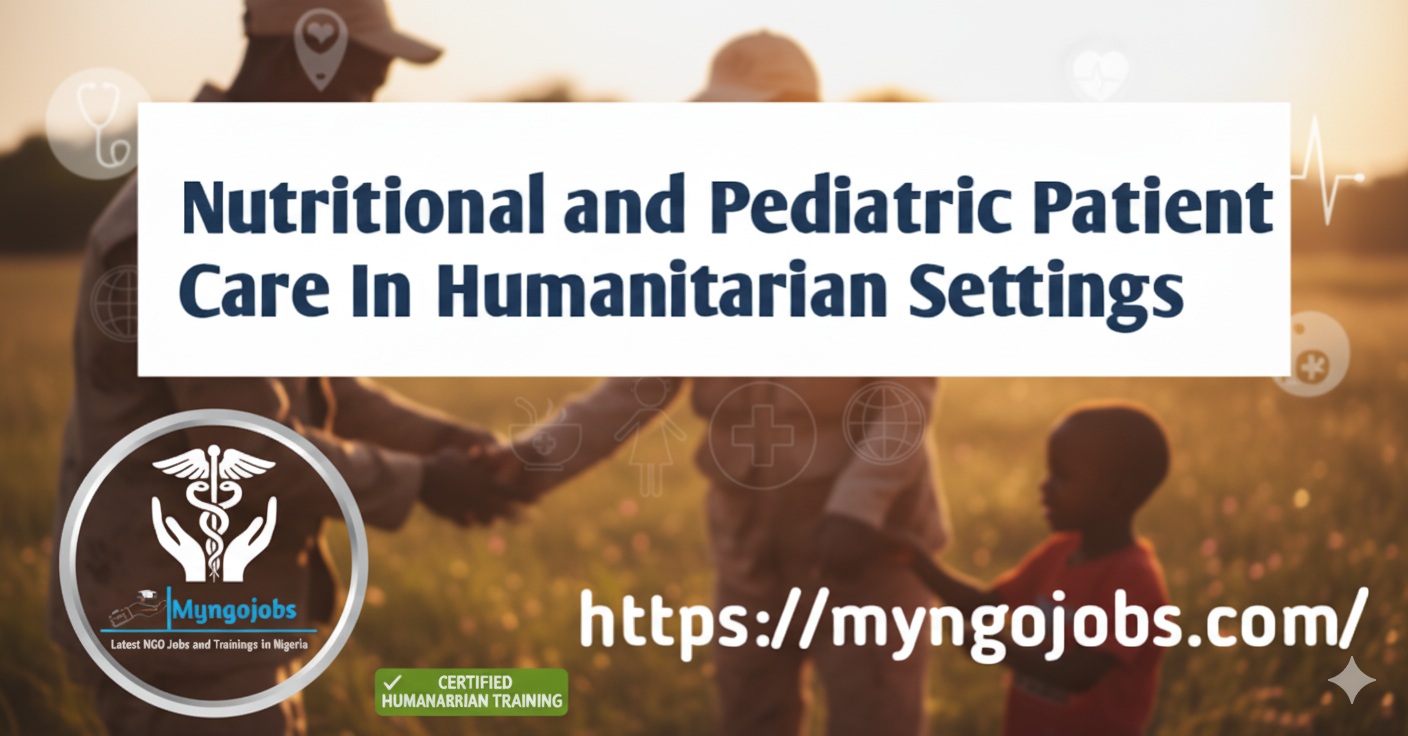Nutritional and Pediatric Patient Care In Humanitarian Settings

About Course
Nutritional and Pediatric Patient Care in Humanitarian Settings is a comprehensive training program designed for healthcare professionals working in emergency, crisis, and resource-limited environments. The course provides practical knowledge and hands-on skills in the assessment, treatment, and ongoing care of children with Severe Acute Malnutrition (SAM) and other critical pediatric conditions.
Participants will learn structured protocols for inpatient and outpatient nutritional treatment, infection prevention, emergency response, clinical procedures, and safe patient transfers. Emphasis is placed on accurate documentation, teamwork, and rapid decision-making to improve survival rates and quality of care for vulnerable pediatric populations.
By the end of the course, participants will be able to confidently manage nutritional and medical needs, from admission through discharge, using internationally recognized humanitarian health guidelines.
Course Content
Module 1: Introduction to Severe Acute .Malnutrition (SAM) and Pediatric Patients
-
What is SAM? – Definition, causes, and impact on health.
00:00 -
Who is a SAM Patient? – Identifying characteristics of SAM patients.
00:00 -
Who is a Pediatric Patient? – Age classification and special considerations in care.
Module 2: Understanding Nutritional Treatment Centers (ATFC & ITFC)
Module 3: Nutritional Management and Product Use
Module 4: Patient Movement and Transfers
Module 5: Intensive Care Unit (ICU) and Critical Care Management
Module 6: Documentation and Reporting
Module 7: Clinical Responsibilities and Procedures
Module 8: Infection Prevention and Essential Procedures
Module 9: Emergency Management in SAM and Pediatric Patients
Final Course Quiz – Nutritional and Pediatric Patient Care in Humanitarian Settings
Module 10: Simplified and Combined Approaches in Humanitarian Settings
Module 11: Management of Infants Under 6 Months with Malnutrition (MAMI Approach) 9 Lessons
Module 12: Psychosocial Support and IYCF-E Counselling
Module 13: Monitoring, Evaluation, and Reporting in Nutrition Programs
Module 14 : Understanding Humanitarian Principles in Nutrition and Pediatric Care
Module 15: Integrated Management of Nutritionally At-Risk Infants Under 6 Months (<6m): Inpatient Nutrition and Medical Care
Student Ratings & Reviews
*Severe Acute Malnutrition (SAM) management in children*
This topic aligns well with the questions and answers we've covered, including:
- Therapeutic feeding (F-75, F-100)
- Rehydration therapy (ReSoMal)
- Pediatric Early Warning Scores (PEWS)
- Inpatient Therapeutic Feeding Centre (ITFC) care
- Managing complications and deterioration in SAM patients
These topics are all relevant to providing quality care for children with SAM.
1. *Initial Assessment*: Evaluate child's nutritional status, medical history, and overall health.
2. *Stabilization Phase*: Provide therapeutic feeding (F-75 formula) to stabilize child's condition, manage medical complications, and address dehydration.
3. *Rehabilitation Phase*: Gradually introduce nutrient-rich foods (F-100 formula or Ready-to-Use Therapeutic Food (RUTF)) to promote weight gain and recovery.
4. *Monitoring and Follow-up*: Regularly monitor child's progress, weight gain, and overall health.
5. *Discharge Criteria*: Child meets discharge criteria when:
- Weight-for-height is above -2 z-score.
- Child is clinically well.
- Caregiver is educated on proper feeding practices.
Final Discharge
- Child is discharged from the treatment program when they have achieved a healthy weight and are clinically stable.
- Caregivers receive education on:
- Proper nutrition and feeding practices.
- Follow-up care and monitoring.
- Prevention of future malnutrition episodes.